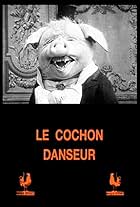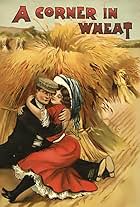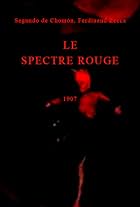IMDb RATING
6.6/10
1.1K
YOUR RATING
In a society in which gender roles are switched, will men tolerate being unequal?In a society in which gender roles are switched, will men tolerate being unequal?In a society in which gender roles are switched, will men tolerate being unequal?
- Director
Photos
Storyline
Did you know
- TriviaIncluded on the "Alice Guy Blanche Vol. 1: The Gaumont Years" Blu-ray, released by Kino.
- ConnectionsFeatured in Be Natural: The Untold Story of Alice Guy-Blaché (2018)
Featured review
This is a very important little film by Alice Guy and, unlike many of the films around this time wrongly ascribed to her, is very definitely her work. She would later remake the film, in a somewhat less anti-feminist mode, in the US as In the Year 2000 in 1912. Alas, although we have descriptions of the film, the film itself does not sruvive. It has sometimes been suggested (on no very good grounds) that Guy was pressured by Gaumont into giving this film an anti-feminist slant. This is rather improbable and it is worth remembering that Guy was not a particularly unconventional woman and, when this film was made (probably in fact early 1907) she was on the point of getting married (4 March 1907).
It was in fact probably made in January-February 1907 (it comes shortly after the Christmas 1906 films in the Gaumont 1908 cataogue) and, along with L'Assassin (a "grand guignol" melodrama about a demi-mondaine who finds a known killer has broken into her flat). This second film was part of a fashion for "grand guignol" (they might best be described as "terror" films to distinguish them from the later "horror" genre) which had been set by Lucien Nonguet's Terrible Angoisse (Pathé, 1905) based on André de Lorde's play Au téléphone (subsequently refilmed by Pathé -Le chàteau du médecin - and then remade by Edwin Porter, D. W.Griffith The Lonely Villa - Lois Weber - Suspense - and Yakov Protazonov). Earlier in 1906 Guy had also made Lèvres closes (based on the play La Paralytique) about a paralysed man unable to prevent a house-breaker from murdering his grand-daughter). These films were probably written by Louis Feuillade (who would later remake La Paralytique himself) but very definitely directed by Guy, who discusses them in he biography.
In 1906 Guy also went with scriptwriter Feuillade and future husband Herbert Blaché to the South of France to film Frédéric Mistral's classic novel Mireille. Unfortunately the film did not come out (botched by Blaché, nevertheless forgiven by a love-lorn Guy). Had it been made, this film would have been an important addition to her repertoire.
She was also of course in 1906 very largely occupied in making phonoscenes, "talkies" with synchronised sound largely based on operas and popular songs, of which over 100 were made at this time, several of which she would later remake in a fashion in the US as silent fiction films.
All this is to emphasise the seriosuness of Guy as a film-maker and how very different her own films are from those - mainly slapstick coedies, chase films, toilet humour etc - made at this same time by her various assistants - Feuillade, Étienne Arnaud and Roméo Bosetti.
Unfortunately the Alice Guy fan club (including her biographer and abetted by Gaumont itself, misascribing films willy-nilly) is characterised more by enthusiasm than intelligence and, in its determination to ascribe anything and everything to Alice Guy (see my reviews of La Vérité sur l'homme-singe, La Course à la saucisson, Le Billet de banque, Le Frotteur and La Glu) does her reputation no good at all.
No doubt, if and when Gaumont trouble to unearth Feuillade's C'est papa qui a pris la purge about a man with an incontinence probem - the Pathé version of the same film is available - or Concours des fumeurs about men making themseves sick in a smoking contest, the fan club will be just as eager to ascribe them to Guy as well and damage her reputaion yet further.
In the meantime, those of us who are interested in the more serious side of Alice Guy's film-making might prefer to hope that the remake of this US film is rediscovered in a biscuit-tin somewhere and that Gaumont stirs itself to publish Lèvres closes and L'Assassin which very probably do still survive somehere in their archives.
It was in fact probably made in January-February 1907 (it comes shortly after the Christmas 1906 films in the Gaumont 1908 cataogue) and, along with L'Assassin (a "grand guignol" melodrama about a demi-mondaine who finds a known killer has broken into her flat). This second film was part of a fashion for "grand guignol" (they might best be described as "terror" films to distinguish them from the later "horror" genre) which had been set by Lucien Nonguet's Terrible Angoisse (Pathé, 1905) based on André de Lorde's play Au téléphone (subsequently refilmed by Pathé -Le chàteau du médecin - and then remade by Edwin Porter, D. W.Griffith The Lonely Villa - Lois Weber - Suspense - and Yakov Protazonov). Earlier in 1906 Guy had also made Lèvres closes (based on the play La Paralytique) about a paralysed man unable to prevent a house-breaker from murdering his grand-daughter). These films were probably written by Louis Feuillade (who would later remake La Paralytique himself) but very definitely directed by Guy, who discusses them in he biography.
In 1906 Guy also went with scriptwriter Feuillade and future husband Herbert Blaché to the South of France to film Frédéric Mistral's classic novel Mireille. Unfortunately the film did not come out (botched by Blaché, nevertheless forgiven by a love-lorn Guy). Had it been made, this film would have been an important addition to her repertoire.
She was also of course in 1906 very largely occupied in making phonoscenes, "talkies" with synchronised sound largely based on operas and popular songs, of which over 100 were made at this time, several of which she would later remake in a fashion in the US as silent fiction films.
All this is to emphasise the seriosuness of Guy as a film-maker and how very different her own films are from those - mainly slapstick coedies, chase films, toilet humour etc - made at this same time by her various assistants - Feuillade, Étienne Arnaud and Roméo Bosetti.
Unfortunately the Alice Guy fan club (including her biographer and abetted by Gaumont itself, misascribing films willy-nilly) is characterised more by enthusiasm than intelligence and, in its determination to ascribe anything and everything to Alice Guy (see my reviews of La Vérité sur l'homme-singe, La Course à la saucisson, Le Billet de banque, Le Frotteur and La Glu) does her reputation no good at all.
No doubt, if and when Gaumont trouble to unearth Feuillade's C'est papa qui a pris la purge about a man with an incontinence probem - the Pathé version of the same film is available - or Concours des fumeurs about men making themseves sick in a smoking contest, the fan club will be just as eager to ascribe them to Guy as well and damage her reputaion yet further.
In the meantime, those of us who are interested in the more serious side of Alice Guy's film-making might prefer to hope that the remake of this US film is rediscovered in a biscuit-tin somewhere and that Gaumont stirs itself to publish Lèvres closes and L'Assassin which very probably do still survive somehere in their archives.
Details
- Release date
- Country of origin
- Language
- Also known as
- Las consecuencias del feminismo
- Production company
- See more company credits at IMDbPro
- Runtime7 minutes
- Color
- Sound mix
- Aspect ratio
- 1.33 : 1
Contribute to this page
Suggest an edit or add missing content

Top Gap
By what name was The Consequences of Feminism (1906) officially released in India in English?
Answer












